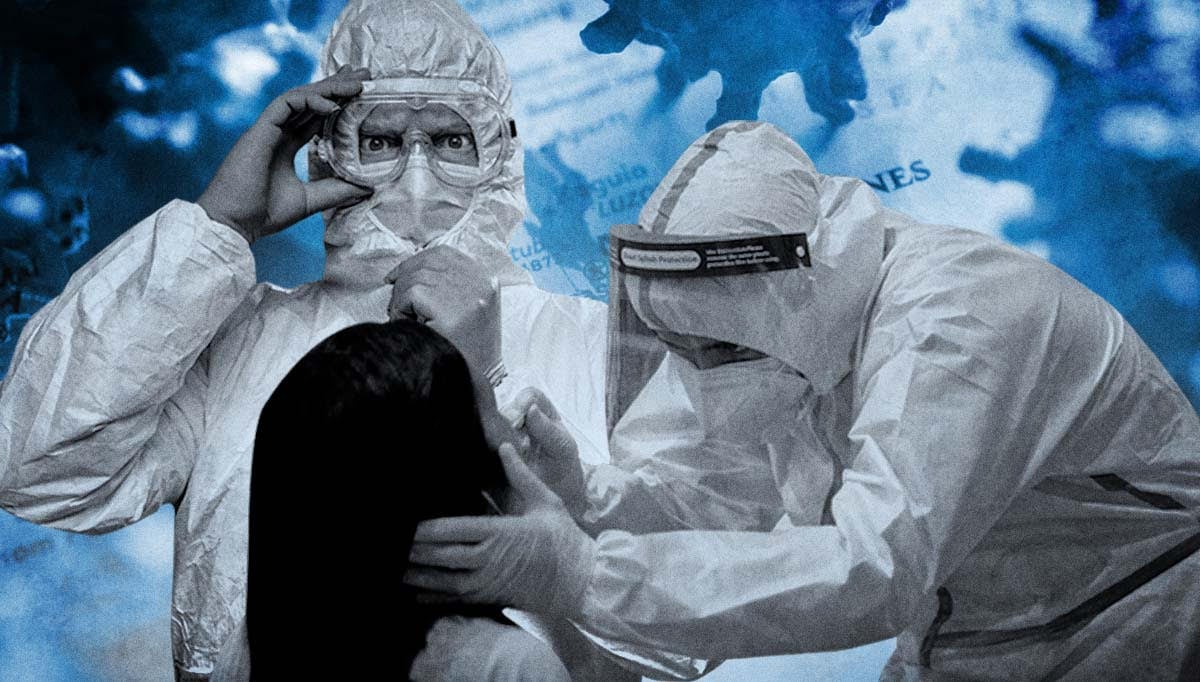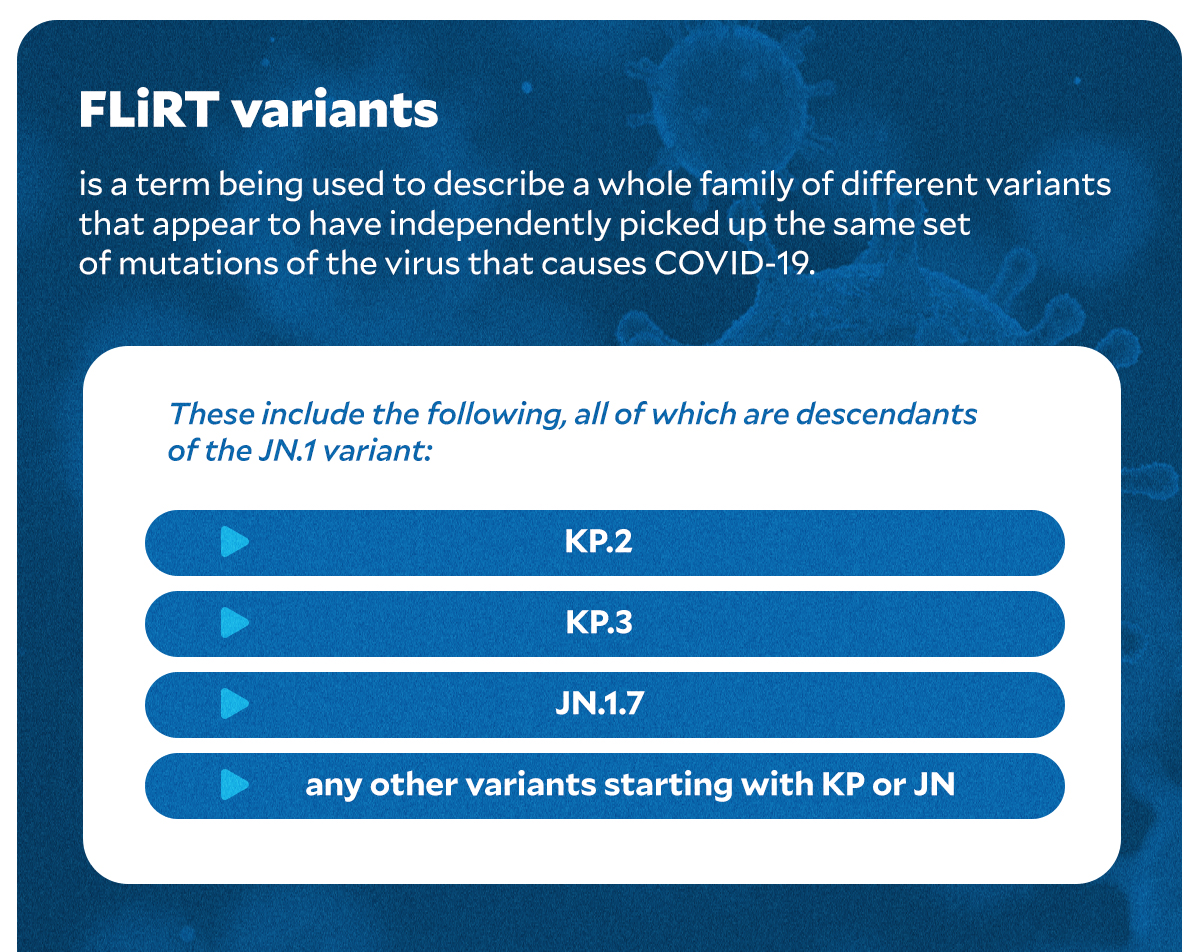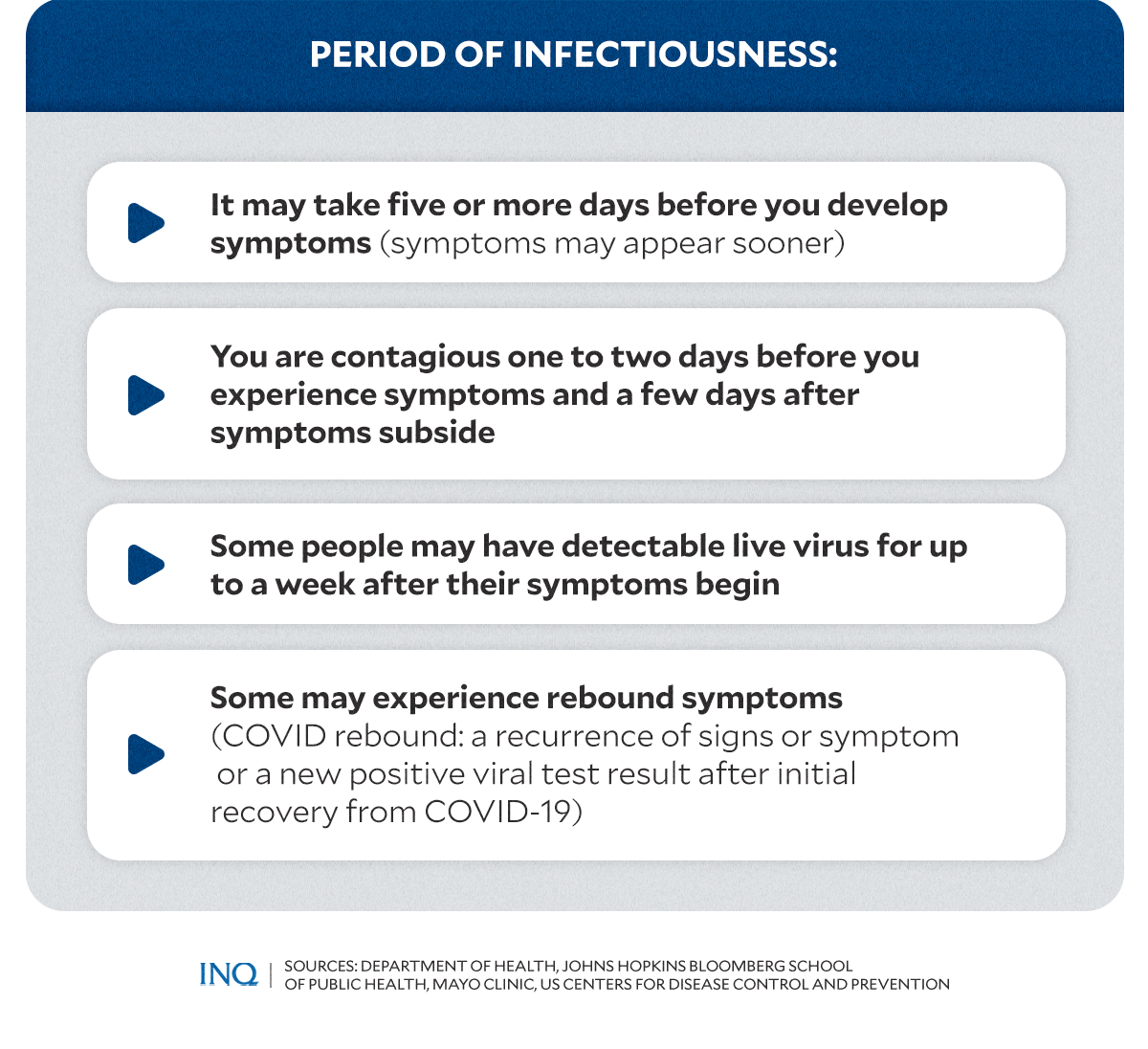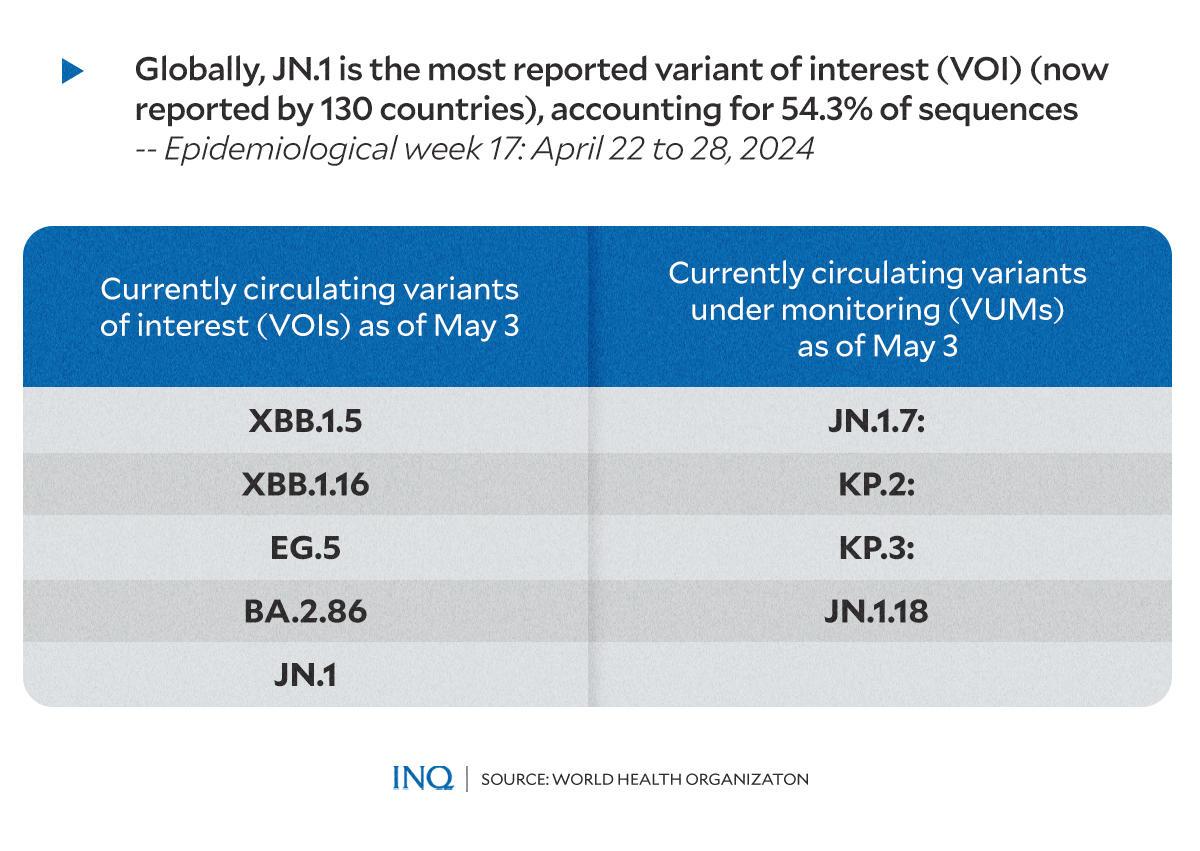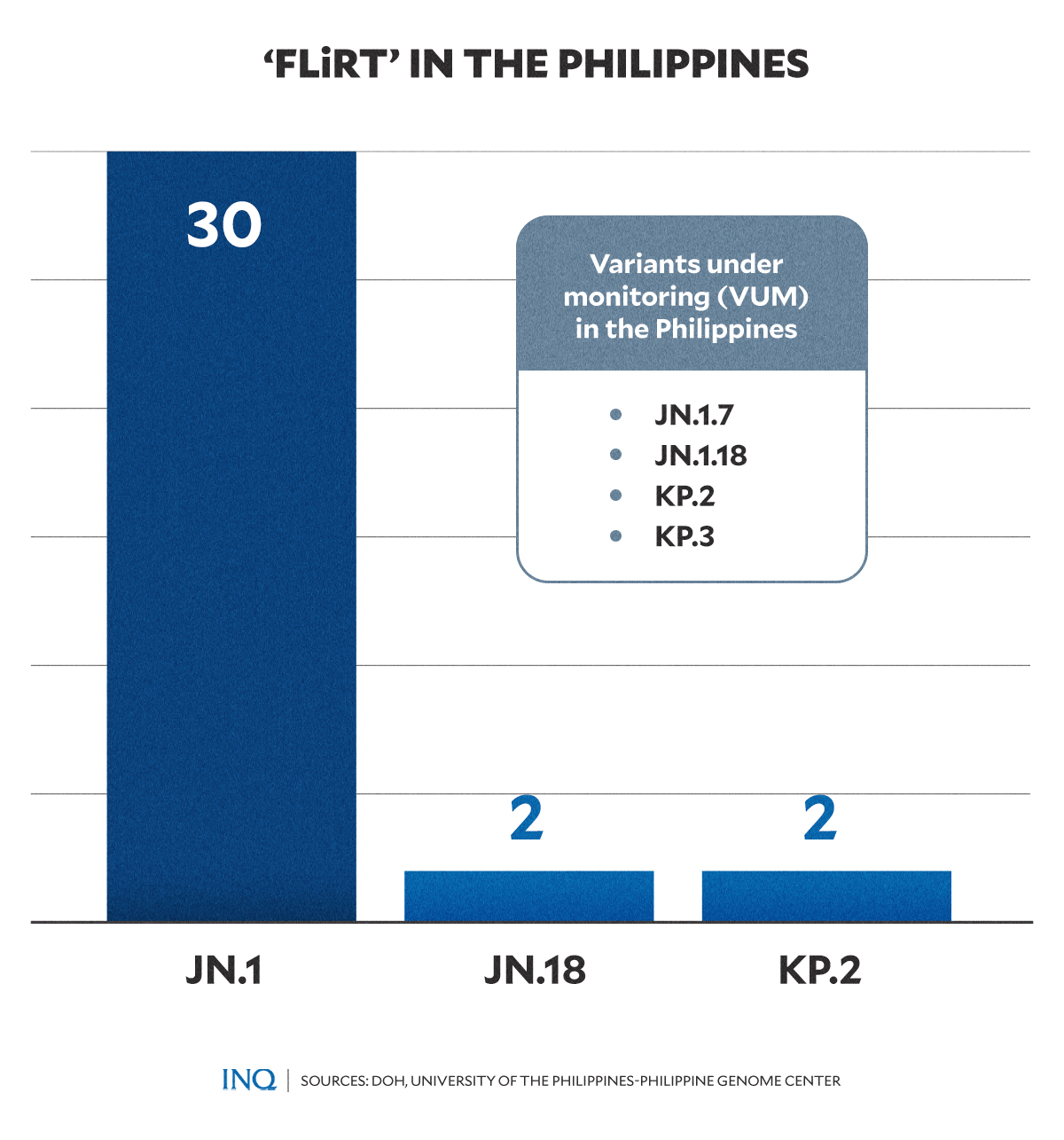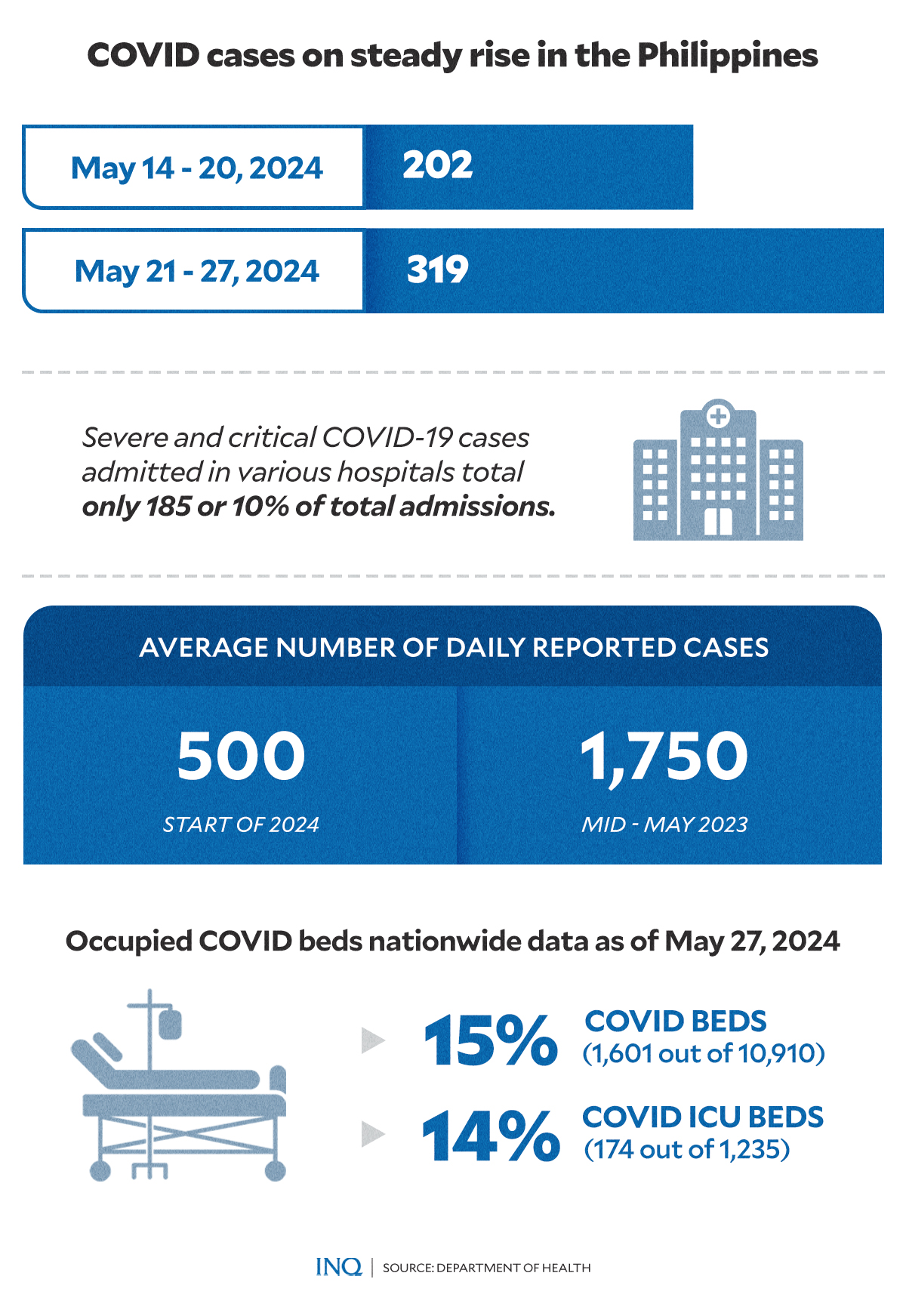MANILA, Philippines—The Department of Health (DOH) recently confirmed that the new “FLiRT” variants of SARS-CoV-2, the virus that causes COVID-19 and which have been rapidly spreading in other countries, are now in the Philippines.
According to the US Centers for Disease Control and Prevention (CDC), the KP.2 COVID-19 variant accounted for approximately four percent of infections in the US in late March. Its parent strain, JN.1, was responsible for more than 50 percent of cases in that country.
By early May, KP.2 variant cases surged, accounting for 28 percent of infections US-wide, surpassing the JN.1 variant as the dominant strain.
On June 4, the same variants — along with other variants under monitoring — were confirmed to be detected in the Philippines.
The DOH announced that genome sequencing data by the University of the Philippines – Philippine Genome Center (UP-PGC) showed that 30 cases of JN.1 and two cases of KP.2 have so far been recorded in the country.
DOH spokesperson Albert Domingo explained that the earliest sample collection date for JN.1 in the country dates as far back as November 2023, while for KP.2, it was in May 2024.
READ: DOH confirms detection of COVID-19 ‘FLiRT’ variant KP.2 in PH
The health department noted that currently, there are four variants under monitoring—JN.1.7, JN.1.18, KP.2, and KP.3—all of which are descendants of JN.1.
The DOH and the CDC identified variants KP.2 and KP.3 as among the group of new virus strains known as the FLiRT variants, which, Yale Medicine said, are sub-variants of the Omicron variant that emerged in November 2021.
What are FLiRT variants, and why are they named so?
The Johns Hopkins Bloomberg School of Public Health (BSPH) explained that FLiRT variants is a term used to describe a group of different virus strains that have independently acquired the same mutations causing COVID-19.
These variants include KP.2, KP.3, JN.1.7, and any other variants starting with KP or JN, all of which are descendants of the JN.1 variant.
The DOH explained that FLiRT is a nickname given by researchers to describe specific changes in the COVID-19 virus’s spike protein: from phenylalanine (F) to leucine (L) at position 456, and from arginine (R) to threonine (T) at position 346.
In a statement, the DOH stressed that it avoids using FLiRT to refer to the group of variants “as the term is informal and casual.” The health department added that using the term “might result in a miscommunication of health risk.”
Where did the new strains come from?
It is still not clear where exactly the FLiRT variants first emerged. However, Yale Medicine said the strains were first detected in the US from wastewater monitoring and tests conducted by the CDC.
In the US, wastewater or sewage is being tested by the CDC to detect traces of infectious disease circulating in a community, even if people do not have symptoms. Data collected through this method are used as an early warning that levels of infections may be increasing or decreasing in the community.
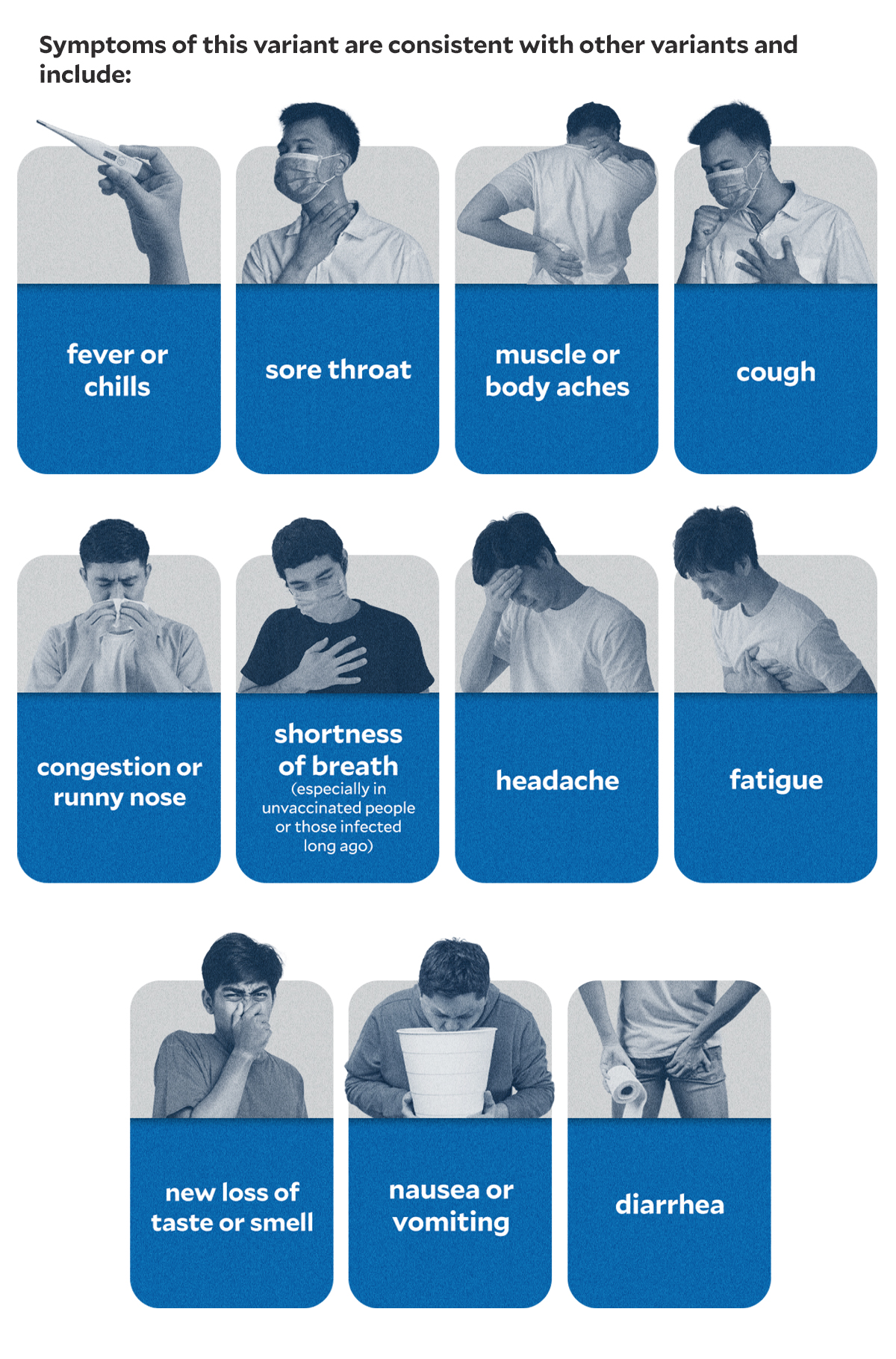
GRAPHIC BY ED LUSTAN
To further understand how the FLiRT strains emerged, Yale Medicine said it helps to look at how the SARS-CoV-2 virus has changed over time. As the virus mutated, new variants formed.
“Omicron was a variant of SARS-CoV-2 that took hold in the U.S. in 2021 and began to spawn sub-variants of its own,” said Yale Medicine.
“One of those was JN.1, which was identified in September 2023 and spread through [the US] during the winter months, leading to a spike in COVID hospitalizations,” it said.
“JN.1 also has descendants; the FLiRT subvariants are spinoffs of one called JN.1.11.1,” Yale Medicine added.
Are FLiRT variants more contagious and deadlier?
The DOH assured the public that the new variants under monitoring, which include the FLiRT variants, “continue to be clinically mild and manageable.”
The World Health Organization (WHO), in its latest COVID-19 Epidemiological Update, clarified that “there are currently no reported laboratory or epidemiological reports indicating any association between [variants of interest or variants under monitoring] and increased disease severity.”
The Philippines’ health department echoed WHO’s observation, stressing that there is still no evidence now that the KP.2 and KP.3 variants are causing severe to critical COVID-19, both locally and internationally.
“Further assessment continues to determine transmissibility and capacity to evade immune response,” DOH said.
Symptoms and period of infectiousness
Various health experts said that symptoms of FLiRT variants are not new or different from other SARS-CoV-2 variants.
The Usual symptoms of COVID-19 include:
- fever or chills
- sore throat
- muscle or body aches
- cough
- congestion or runny nose
- shortness of breath (especially in unvaccinated people or those infected long ago)
- fatigue
- headache
- new loss of taste or smell
- nausea or vomiting
- diarrhea
The period of infectiousness, or the transmission timeline, for FLiRT variants is also consistent or the same as with JN.1 and previous Omicron variants.
According to the BSPH, it may take five or more days after being exposed to the FLiRT variants before a person develops symptoms. In some cases, however, symptoms may appear sooner.
An infected person can spread the virus about one to two days before symptoms appear and for a few days after symptoms subside. Like previous variants, individuals with the FLiRT variants might also have detectable live virus for up to a week after symptoms start.
Do vaccines work against FLiRT variants?
An infectious disease specialist from Yale Medicine stated that vaccination remains crucial against the new strains. Additionally, the specialist emphasized that everyone eligible for COVID-19 vaccination should ensure they are up to date with the latest COVID-19 vaccines.
“We know that the updated monovalent vaccine, which was designed for the XBB.1.5 variant, worked against JN.1, and I strongly suspect it will have some degree of activity against the FLiRT mutations as well,” said Dr. Scott Roberts.
“I would especially recommend anyone who qualifies for the vaccine because of advanced age get it if they haven’t already,” Roberts added. “The reason is that the biggest risk factor for a bad outcome from COVID is advanced age.”
The infectious disease specialist added that while vaccination may not prevent infection, it significantly lowers a person’s risk of severe illness, hospitalization, and death from COVID-19.
The DOH spokesperson said the public’s immunity from the virus due to the original primary series of COVID-19 vaccines and booster shots administered from 2021 to 2023 had waned over time, although “not totally lost.”
“There may be some degree of residual immunity left, which is still better than having not been vaccinated at all,” Domingo said in a message to the Inquirer.
However, Domingo said that the health department has no budget under the 2024 appropriations law to acquire updated COVID-19 vaccines considered more effective against the FLiRT variants.
READ: DOH: No budget for new vaccines vs ‘FLiRT’ variants of COVID-19
He said that the department’s current funding was focused on procuring doses for the routine immunization of children.
“Budget allocations for COVID-19 vaccination are made based on an assessment of public health needs. In situations where the case severity is low or mild only, there may not be an urgent need to budget and procure as before,” Domingo explained.
Can past infections provide protection?
Several health experts explained that previous or recent COVID-19 infections may provide a certain degree of protection against the FLiRT variants.
“A JN.1 infection should provide pretty strong protection against all the FLiRT variants,” BSPH said, citing Dr. Andy Pekosz, professor of microbiology and immunology.
“The difference between JN.1 and these variants is only one or two amino acid changes, so there are still a lot of other places antibodies can bind to. Infection from a variant older than JN.1 is less likely to offer as much protection,” BSPH said.
Dr. Matther Binnicker, director of the Clinical Virology Laboratory at Mayo Clinic, echoed the sentiment.
“If you’ve been infected or vaccinated in the past three to four months, you’re probably going to have antibodies that are going to recognize these newer viruses effectively,” Binnicker said.
“And it will help you keep from getting really sick and may even help prevent you from coming down with any symptoms,” he said.
However, he emphasized that the FLiRT variants can evade the immune response more effectively than prior versions of the virus.
How can the public protect itself?
The DOH reminded the public that good respiratory hygiene (covering coughs), washing hands, choosing lesser crowds, and ensuring good airflow and ventilation are tried and tested ways to prevent (influenza-like illnesses) ILIs and other acute respiratory illnesses, including COVID-19.
The health department likewise recommended those who feel ill to stay at home in the meantime or properly wear a mask should there be a need to go out.
Health experts also noted that keeping a few COVID test kits around the house is also a good idea in case someone from the household starts to feel sick.
“Testing — whether at home or in a health care setting — will make sure you know what you’re infected with, which can inform the best treatment plan if you are in a high-risk group or your symptoms progress to more severe illness,” BSPH said.
“As with any respiratory virus, even when case rates nationally are low, it’s common to see infections increase in one area of the country but not another,” BSPH said.
“Keep an eye on case rates in your region or anywhere you plan to travel, to know whether you should take additional precautions,” it added.


